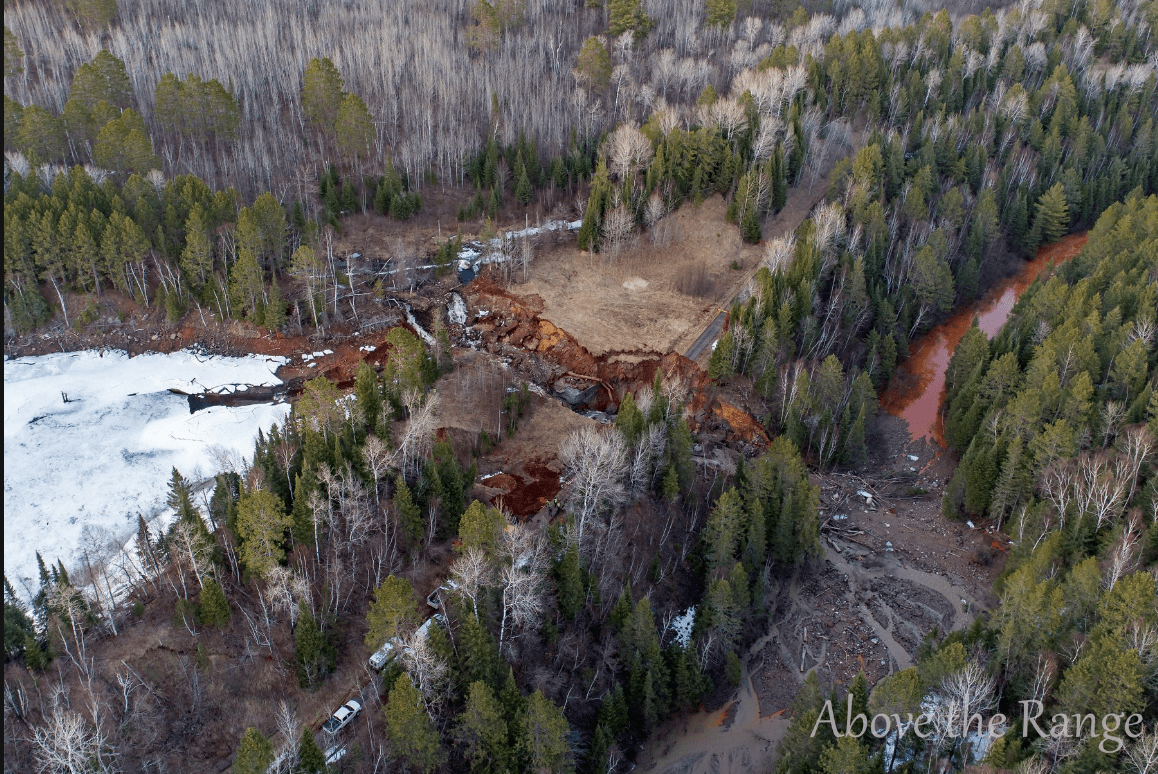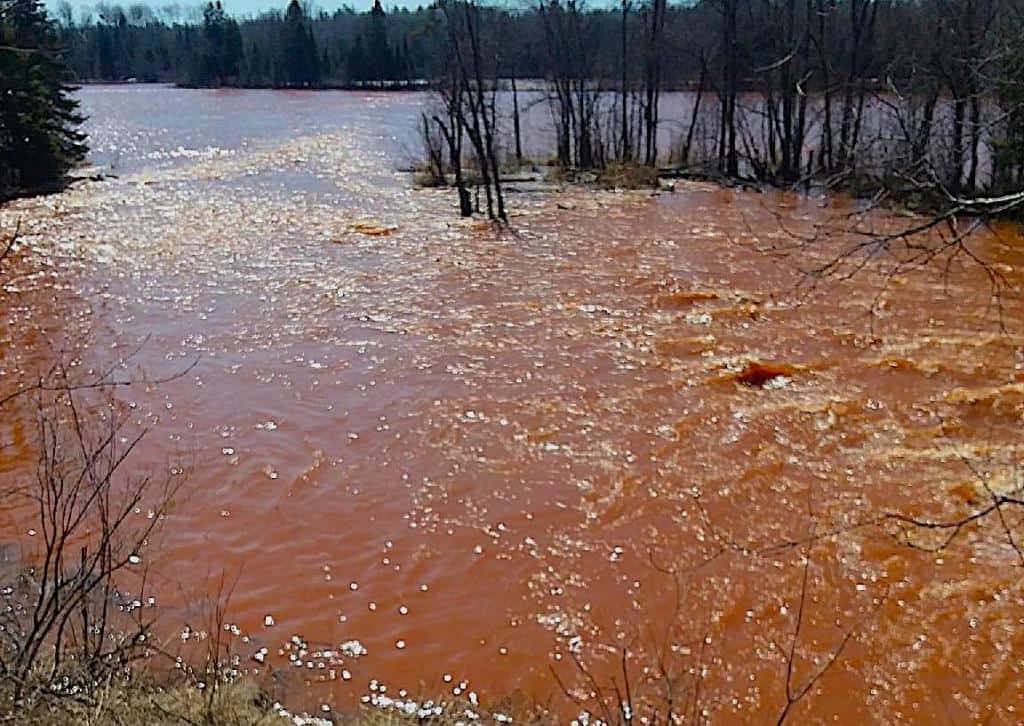
An embankment next to a lake in a former mine pit was breached in late April, causing significant damage to infrastructure, recreation, and the Embarrass River — a tributary of the St. Louis River, which ultimately flows into Lake Superior. The incident caused serious inconvenience for local residents, while also raising concerns about the safety of mine dams.
The lake was on the site of the Hector Mine, which closed in 1953. The embankment which failed carries the Mesabi Trail, a popular recreation trail. It also had buried sewer and natural gas lines in it. Approximately 10,000 gallons of sewage was released in the April 24 incident.
The embankment breach began last November, with repairs planned for this spring. Officials believe it was caused by “heavy fall precipitation, runoff from the surrounding watershed, beaver activity and other drainage pipe obstructions.”
The washout cut off sewer and water connections to the Giant’s Ridge recreation area, contaminatied local waterways, and caused expensive damage to public and private property. About 60 residences lost water, while people in the Giant’s Ridge area were told they must boil water before drinking it, reported the Duluth News Tribune.
It could have been a lot worse, said the St. Louis County board commissioner who represents the area and visited the site.
“We are lucky we didn’t have a much bigger catastrophe than we’re having out there,” St. Louis County Commissioner Thomas Rukavina said at the May 8 committee of the whole, according to the Duluth Reader. Rukavina previously served in the Minnesota House of Representatives.
Water worries

The Iron Range Resources & Rehabilitation Board owns the property and is leading the response effort. It cited a Minnesota Pollution Control Agency expert on impacts to water quality.
“One of the most noticeable results of the embankment washout is the turbid water spreading through the chain of lakes,” the agency reported. “The discolored water does not pose a threat to human health. The reddish cloudy water is caused by a combination of fine sediment and iron oxide that was suspended during the washout event.
Because of the small size of the sediment particles, it is expected to take a long time to settle out of the water. When it does, it could harm fish spawning by killing eggs and burying nesting sites.
Economic impacts

The incident could hurt tourism at the area, with not only the Mesabi Trail closed, but also causing difficulties at the state-funded Giant’s Ridge golf course and other recreational amenities.
“Once summer get’s here, a big part of the business is cyclists using the Mesabi Trail, and people hiking, accessing Giants Ridge. So, having no access for the time being is going to be a factor for sure,” local business-owner Shawn Callahan told Duluth news station KBJR 6. “Realistically, this has to be repaired quickly because of the loss of utilities to Giants Ridge. So, we’re on it. It will happen fast up here.”
The St. Louis County board instructed its staff to investigate the possibility of receiving disaster funds from the federal government to assist with the response. The state Office of General Administration has already provided some money.
Copper mine concerns
The incident has striking similarities to a catastrophic dam breach in British Columbia, Canada in 2014, when a tailings basin containment dam burst and released 15 million cubic meters of mine waste, much of it containing harmful material, into lakes and rivers downstream.
Environment advocates have warned the proposed PolyMet mine in Minnesota would use a similar dam design as Mt. Polley, and would create risk of a similar release in the headwaters of the St. Louis River.
In a February commentary published on MinnPost, Duluth-based environmentalists reported on a recent visit to Minnesota by a group of citizens from the Mt. Polley region to share what they had experienced and learned.
“Here in Minnesota, PolyMet has said that the comparison between its proposal and Mount Polley is unfair, citing that the slope on its proposed tailings dam would be less steep,” the members of Duluth for Clean Water wrote. “The Mount Polley dam failure, however, was not attributed to the steepness of the slope, but to an unstable foundation.”

